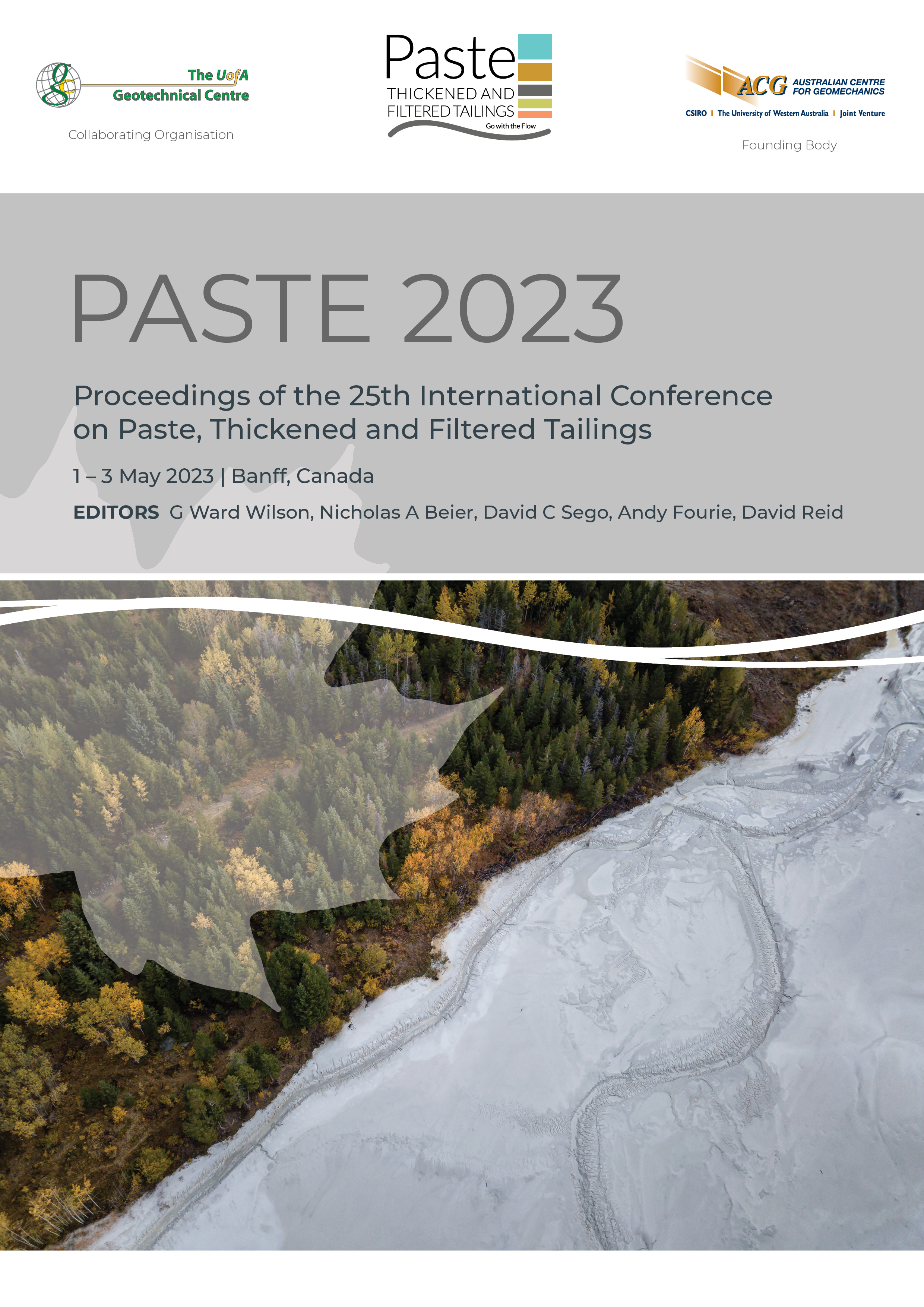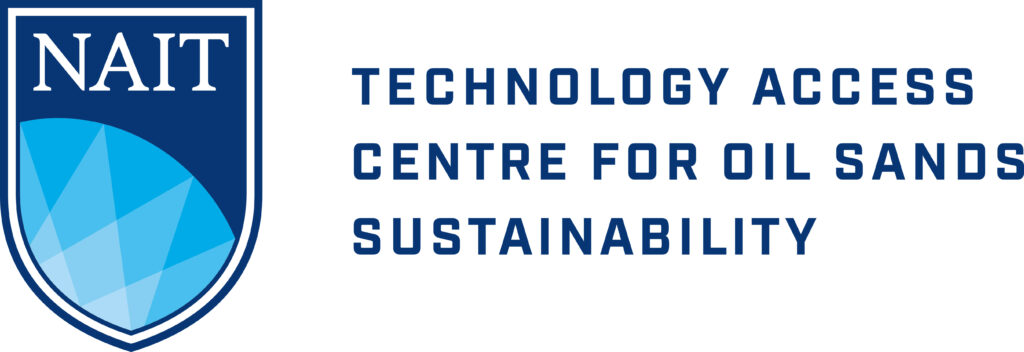Best practices in continuously (or not continuously) pouring paste backfill

|
Authors: Thompson, BD; Veenstra, RL; Carmichael, P; Bawden, WF; Grabinsky, MW |
DOI https://doi.org/10.36487/ACG_repo/2355_21
Cite As:
Thompson, BD, Veenstra, RL, Carmichael, P, Bawden, WF & Grabinsky, MW 2023, 'Best practices in continuously (or not continuously) pouring paste backfill', in GW Wilson, NA Beier, DC Sego, AB Fourie & D Reid (eds), Paste 2023: Proceedings of the 25th International Conference on Paste, Thickened and Filtered Tailings, Australian Centre for Geomechanics, Perth, pp. 279-293, https://doi.org/10.36487/ACG_repo/2355_21
Abstract:
Cemented paste is established as a widely used backfill material. Mines using this type of backfill initially use conservative pouring strategies whereby a ‘plug’ is poured to a height exceeding the (containment) barricade and brow. The plug is allowed to cure to an extent that the remainder of the stope can be poured without inducing significant additional pressure on the barricade. In the last decade, more mines are applying engineering principles including engineered barricade designs, barricade pressure monitoring, specific backfill plug strength designs, and quality assurance/quality control (QA/QC) plant-based protocols to evaluate and verify how the efficiency of backfill placement can be safely optimised. There are several examples within the literature where mines have demonstrated how continuous backfilling can be safely adopted into their respective standard operating procedures. There is, however, an absence of published field data for cases where high or inconsistently low pressures at barricades limit the advisability of continuous pouring. This can create a bias in expectations. We present case study data from mines where a range of barricade pressures leads to, at best, an unproven justification for continuous pouring. Risk profiles are heightened if non-ideal conditions exist (i.e. non-engineered barricades, new operations lacking in sitespecific experience). Emphasis on the continual process of safely optimising backfilling efficiency is more helpful than a focus on the potential end result of continuous pouring. Indeed, we cite cases where operations have reverted to more conservative strategies when better appreciation of the risks of continuous pouring evolve with time or changing conditions. As technology allows the more widespread use of instrumentation to fulfil previous ‘use barricade pressure data to verify safe and efficient backfilling’ recommendations, it is important to step back and review best practice approaches and, indeed, the context of when it is feasible and when it is not feasible for continuously backfilling or accelerated backfilling to be adopted. Critically, we emphasise that instrumentation is only part of the solution to ensure safe backfilling. Definition of adequate plug strength, proven by QA/QC in terms of early age strength testing, adequate barricade designs and potentially personnel exclusion zones are also necessary.
Keywords: paste backfill, continuous pouring, accelerated backfilling, instrumentation, backfill pressure, shotcrete barricades
References:
Alcott, J, Dallaire, D & Belem, T 2019, ‘Pastefill optimisation at Hecla Québec's Casa Berardi mine’, Proceedings of the 53rd US Rock Mechanics/Geomechanics Symposium, American Rock Mechanics Association, Alexandria.
Brown, R, Smith, N & Carmichael, P 2019, ‘One year of paste operations at Jabal Sayid, Saudi Arabia’, in AJC Paterson, AB Fourie & D Reid (eds), Paste 2019: Proceedings of the 22nd International Conference on Paste, Thickened and Filtered Tailings, Australian Centre for Geomechanics, Perth, pp. 387–399,
Grabinsky, M, Thompson, B & Bawden, W 2021, ‘Required plug strength for continuously poured cemented paste backfill in longhole stopes’, MDPI Mining Journal, Special Edition on Application of Empirical, Analytical, and Numerical Approaches in Mining Geomechanics, vol. 1, no. 1, pp. 80–99,
Grabinsky, M, Thompson BD & Veenstra, R 2023, ‘Using cemented paste backfill (CPB) strength profiles to assess the potential for continuous pouring and liquefaction resistance’, in GW Wilson, NA Beier, DC Sego, AB Fourie & D Reid (eds), Paste 2023: Proceedings of the 25th International Conference on Paste, Thickened and Filtered Tailings, University of Alberta, Edmonton, and Australian Centre for Geomechanics, Perth, pp. 282–296.
Grice, AG 1998, ‘Stability of hydraulic backfill barricades’, in M Bloss (ed.), Proceedings of the 6th International Symposium of Mining with Backfill, The Australasian Institute of Mining and Metallurgy, Carlton, pp. 117–120.
Li, J, Ferreira, JV & Le Lievre, T 2014, ‘Transition from discontinuous to continuous paste filling at Cannington Mine’, in Y Potvin & T Grice (eds), Mine Fill 2014: Proceedings of the Eleventh International Symposium on Mining with Backfill, Australian Centre for Geomechanics, Perth, pp. 381–394,
Oke, J, Thompson, BD, Bawden, WF, Lausch, P & Grabinsky, MW 2018, ‘Backfill barricade design: practical experiences and recommendations’, Proceedings of the 52nd US Rock Mechanics/Geomechanics Symposium, Alexandria.
Oke, J, Hawley, K, Belem, T & Hashemi, A 2021, ‘Paste backfill continuous pour: Red Lake operations case study’, in AB Fourie & D Reid (eds), Paste 2021: 24th International Conference on Paste, Thickened and Filtered Tailings, Australian Centre for Geomechanics, Perth, pp. 381–396,
Revell, MB & Sainsbury, DP 2007, ‘Pastefill bulkhead failures’, in FP Hassani & JF Archibald (eds), Proceedings of the 9th International Symposium on Mining with Backfill, Canadian Institute of Mining, Metallurgy and Petroleum, Westmount.
Thompson, BD, Grabinsky, MW, Counter, DB & Bawden, WF 2009, ‘In situ measurements of Cemented Paste Backfill in Long-hole stopes’, in M Diederichs & G Grasselli (eds), ROCKENG09: Proceedings of the 3rd CANUS Rock Mechanics Symposium, Toronto.
Thompson, B, Bawden, WF & Grabinsky, M 2012, ‘In situ measurements of cemented paste backfill at the Cayeli Mine’, Canadian Geotechnical Journal, vol. 49, pp. 755–772,.
Thompson, B, Grabinsky, M & Bawden, W 2011, ‘In situ monitoring of cemented paste backfill pressure to increase backfilling efficiency’, Canadian Institute of Mining Journal, vol. 2, pp. 199–209.
Thompson, BD, Hunt, T, Malek, F, Grabinsky, MW & Bawden, WF 2014, ‘In situ behaviour of cemented hydraulic and paste backfills and the use of instrumentation in optimising efficiency’, in Y Potvin & T Grice (eds), Mine Fill 2014: Proceedings of the Eleventh International Symposium on Mining with Backfill, Australian Centre for Geomechanics, Perth, pp. 337–350,
Yumlu, M & Guresci, M 2007, ‘Paste backfill bulkhead monitoring — a case study from Inmet’s Cayeli Mine, Turkey’, in FP Hassani & JF Archibald (eds), Proceedings of the 9th International Symposium on Mining with Backfill, Canadian Institute of Mining, Metallurgy and Petroleum, Westmount.
© Copyright 2025, Australian Centre for Geomechanics (ACG), The University of Western Australia. All rights reserved.
View copyright/legal information
Please direct any queries or error reports to repository-acg@uwa.edu.au
View copyright/legal information
Please direct any queries or error reports to repository-acg@uwa.edu.au



